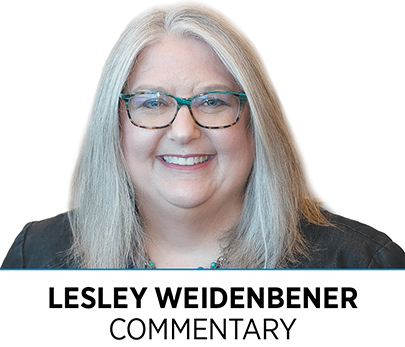Subscriber Benefit
As a subscriber you can listen to articles at work, in the car, or while you work out. Subscribe Now Recently, a person who was upset with the way we covered—or didn’t cover—a press conference emailed me and a number of executives at IBJ Media to express his frustration.
Recently, a person who was upset with the way we covered—or didn’t cover—a press conference emailed me and a number of executives at IBJ Media to express his frustration.
I appreciate that he contacted me. It’s important to me that readers, sources and others share concerns about the decisions we make in the newsroom and ask questions about why we write or don’t write stories, whom we quote and don’t, and what information we include or don’t.
Sometimes, the criticism we receive is warranted and leads to valuable discussions and changes in our newsroom. Other times, we evaluate what someone says and decide we think we’ve made the right call. Still, there’s almost always at least some valuable note to take away.
That doesn’t mean criticism is easy to take. Sometimes in the moment I receive a critical message—whether by phone, email, social media or in person—I can be a bit defensive. But I also try hard to step back and see critiques and questions through an objective lens. I know that’s the only way for me—and for IBJ—to find ways to better serve our community.
Critical messages also open a door for me to explain the news process and differences between the ways we present information. Many readers don’t understand the differences between news stories (which should always be written with balance and objectivity) and opinion pieces, including editorials and columns (which are meant to showcase points of view). Part of the problem is that news organizations don’t always do a great job labeling what we produce.
In IBJ, we label two pages in every issue as “opinion”—and everything on those pages is written or drawn from a point of view. In addition, we have columns about investing, the economy, workplace issues, sports and more that are printed throughout the paper and posted on our website. They are not specifically labeled as “opinion,” but we hope readers recognize them as such because they are standing features that include the writer’s photo and a short bio at the end. That might not be enough. An opinion tag on those might be in order as well.
It can also be difficult to understand what comes from the newsroom and what doesn’t because media organizations (including IBJ) also produce social media posts, podcasts, video and more. Some of it is generated by reporters and editors and follows the same standards we use for reporting stories, while other pieces are produced by our sales and marketing departments or by non-newsroom leaders.
On social media, anything posted by our sales team on behalf of a client is labeled as a partnership or paid post. We strive to make that clear. But we don’t always do a great job distinguishing other types of non-newsroom posts for readers. We want to do better, and we’re brainstorming ideas in the newsroom now.
What I appreciate about being editor at IBJ, though, is that the decisions about news are made in the newsroom—by journalists working to tell stories in balanced ways that serve our readers and our community. Do other folks who work at IBJ Media have opinions about what we do in the newsroom? You bet. Do we listen to their concerns and questions? Of course. But ultimately, I’m responsible for our news decisions.
So feel free to tell me what you think. I welcome it. And you can tell other execs at the company, too. But know the decisions about news are made in the newsroom.•
__________
Weidenbener is editor of IBJ. Reach her at [email protected].
Please enable JavaScript to view this content.
